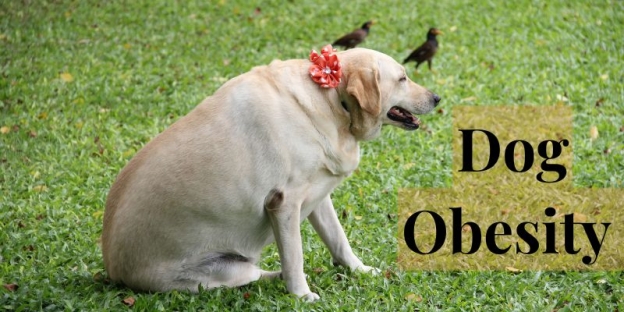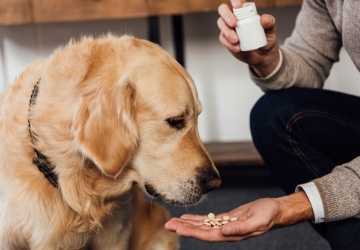Dog Obesity: Causes, Symptoms, And How To Prevent It
Have you noticed your dog slowing down, adding additional weight, or losing energy? Most owners ignore their dogs' weight issues until they get severe.
This guide discusses the key signs of obesity in dogs, its causes, and practical ways to prevent it before health problems become chronic.

What Is Dog Obesity?
Dog obesity is the excessive body fat that is harmful to health. A dog is said to be obese whenever its body weight is 20% or more than the optimal weight. Obesity puts a person at risk of joint-related issues, diabetes, heart disease and even reduced life expectancy.
Common Dog Obesity Causes
There is actually no single cause of dogs becoming overweight. There are various causes of weight gain, with the majority being associated with daily lifestyle choices.
- Overfeeding: Giving excessive meals or huge portions of food provides unnecessary calories.
- High-calorie treats: Fatty snacks, table scraps, or high-calorie biscuits will increase the fat content in the diet.
- Lack of exercise: Inactive dogs use less energy, and the accumulation of fat is inevitable.
- Age: Older dogs have lower metabolism rates, so they gain weight easily.
- Medical conditions: Diseases such as hypothyroidism or Cushing's disease may lead to weight gain.
- Neutering: When dogs are neutered, their energy requirements decrease, although owners do not necessarily change their diets.
Identifying the causes of dog obesity is the first step in controlling your pet's weight.
Key Symptoms Of Dog Obesity
An early diagnosis can avoid severe health risks. Typical symptoms of dog obesity include the following.
- Difficulty feeling ribs: It is essential that one can feel ribs without pushing hard.
- Loss of a waistline: The overweight dogs are rounded and have a slight or no visible waist.
- Heavy Breathing: Obese dogs are more likely to be panting, even after mild exercise.
- Reduced energy: They become exhausted easily and can refuse to walk or play.
- Mobility issues: Stiffness, unwillingness to use stairs, or limping can be habitual.
- Frequent joint pain Occurs Because Being overweight causes pressure on bones and joints.
These are symptoms of dog obesity, and they should not be overlooked because they usually indicate that the weight is impacting the overall wellbeing.

Health Risks Linked To Obesity
Obesity in dogs is not only a cosmetic problem. It can lead to severe health diseases, including:
- Diabetes mellitus
- Heart disease
- Arthritis and hip dysplasia
- High blood pressure
- Reduced immunity
- Shortened lifespan
The sooner you start to control the causes of obesity in dogs, the more likely you are to prevent such complications.
Preventing Obesity In Dogs With Proper Nutrition
One of the best methods of preventing obesity among dogs is diet. Making changes in feeding habits can have a significant impact.
- Measure portions: Use veterinarians' recommendations instead of making guesses.
- Choose quality food: Select a well-balanced, nutritious meal, not kibble that is full of filler.
- Limit treats: Snacks must not exceed 10% of the total calories.
- Avoid table scraps: Do not prefer human food because it is too fatty or salty.
Controlled feeding helps reduce calorie count, one of the biggest causes of dog obesity.
Exercise: The Key To a Healthy Weight
Just as humans need activity to maintain a healthy body, the same is true for dogs. Regular exercise helps to burn calories and build strong muscles.
- Take a daily walk depending on the age and breed of your dog.
- Introduce a form of interactive play, such as tug-of-war or fetch.
- Give intellectual stimulation through puzzle toys or training games.
- Swimming is best for dogs with joint issues.
One of the best ways of preventing obesity in dogs is through consistent activity.

The Role Of Vet Checkups
Occasionally, weight gain is associated with underlying health issues. Routine visits to the veterinarian will eliminate the medical causes of dog obesity, like thyroid disorders.
A vet may also be used to set realistic weight loss expectations and recommend an appropriate diet plan. Monitoring weight progress at appointments ensures achieving gradual improvements without danger.
Safe Weight Management For Dogs
If your dog is already overweight, it should lose weight gradually and in a safe way. Sudden weight loss may be detrimental to their health. Here's how to manage it:
- Lose weight gradually under the supervision of a veterinarian.
- Substitute fatty snacks with vegetables such as green beans or carrots.
- Increase progressive exercise to prevent strain.
- Get into a routine because dogs get confused when their environment changes suddenly.
The key to properly reversing the symptoms of dog obesity is patience and consistency.
Preventing Obesity In Dogs At Different Life Stages
The prevention strategies differ according to age:
- Puppies: Do not be overfed; it is better to grow at a normal rate than to gain weight quickly.
- Adults: Eat regularly in a balanced way and do exercise.
- Seniors: Shrink portions when less active and have a slower metabolism.
Understanding the effects of age on metabolism is essential for preventing obesity in dogs in the long term.
Balance Today, Wellness Tomorrow!
Obesity has become a significant issue in dogs; owners can control it with knowledge and effort. By identifying the causes and early symptoms of dog obesity and emphasising diet and exercise, you can ensure your pet is not exposed to any serious health complications.
The most important way to prevent obesity in dogs is through balance, measured portions, daily exercise and regular veterinary checkups. Your actions today will pay off for you and your dog in years of happy play and companionship.







